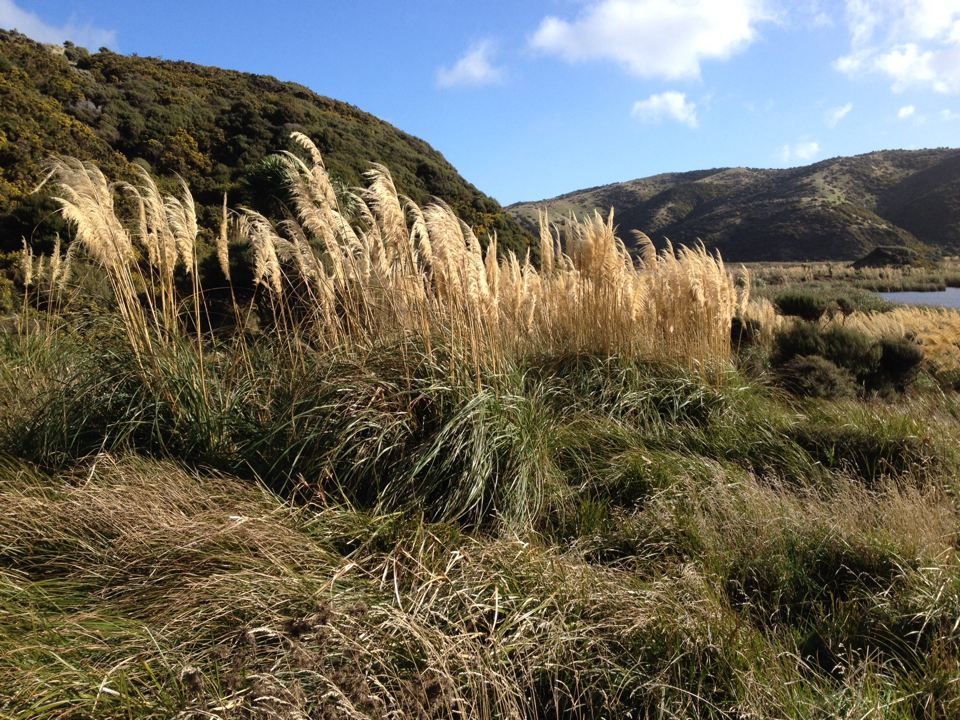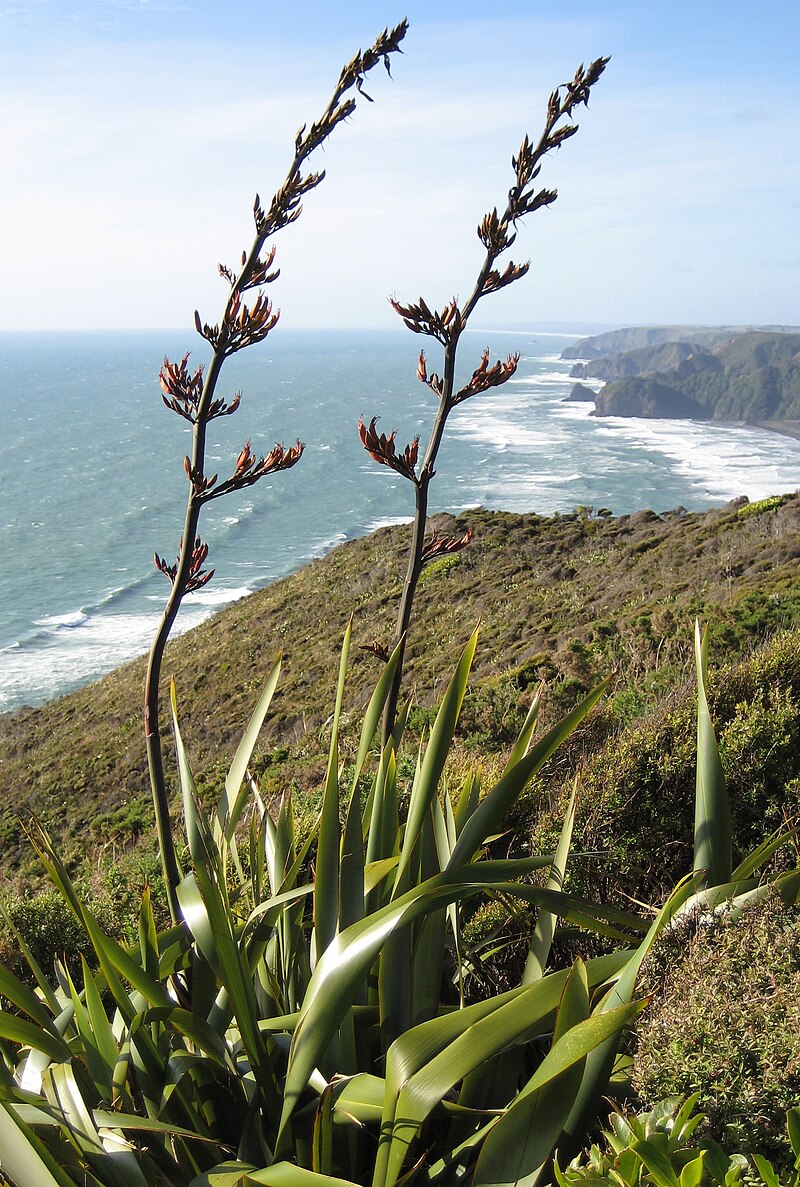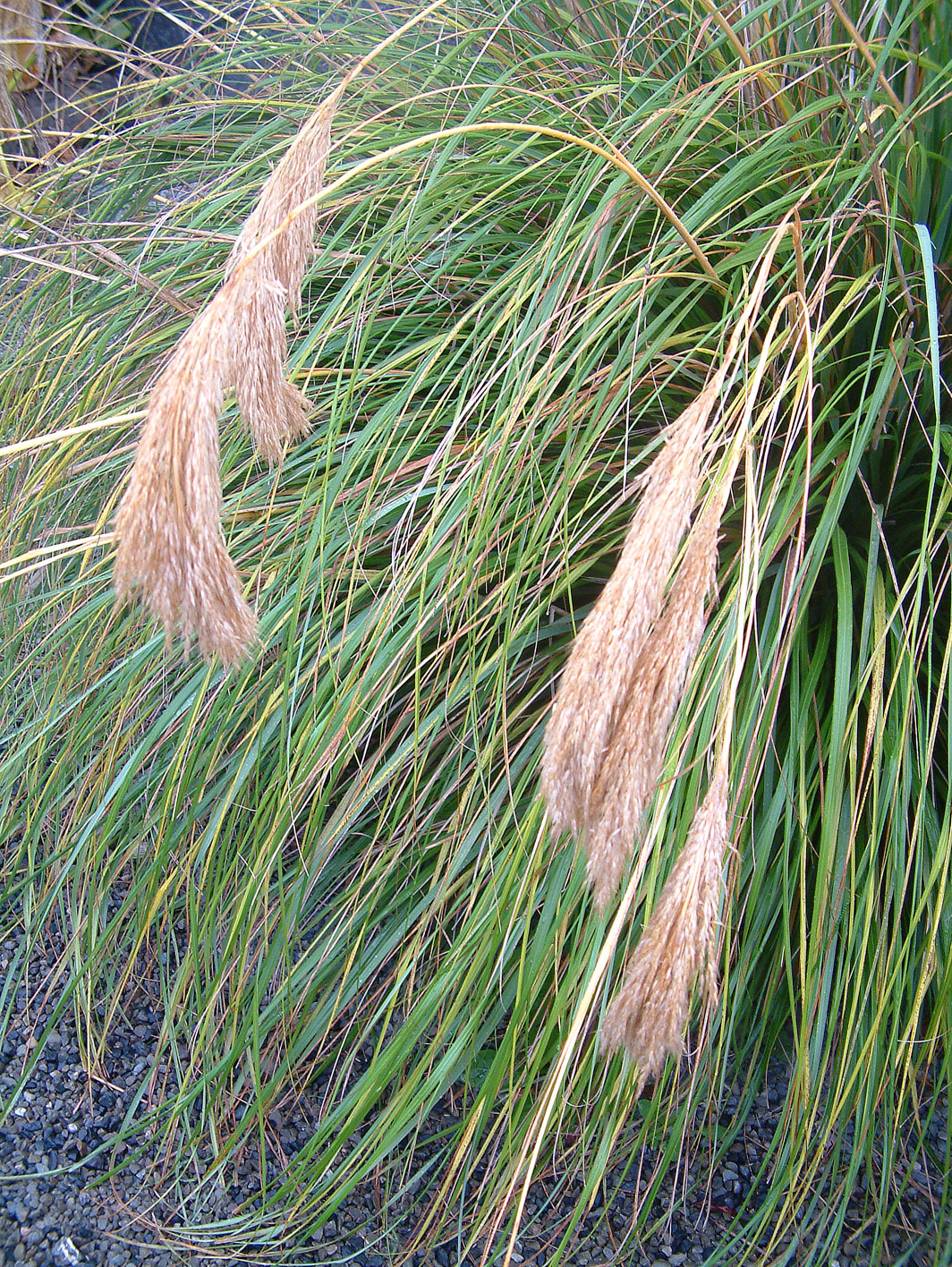Toetoe
Austroderia toetoe

Image credit: Wikipedia
Toetoe is a majestic native grass that plays a significant role in both natural landscapes and modern gardens. As a member of the grass family, it shares characteristics with other important wetland plants.

Quick Facts
- Common Name: Toetoe
- Scientific Name: Austroderia toetoe
- Family: Poaceae (Grass family)
- Native Status: Endemic to New Zealand
- Height: Up to 4-5 meters (including flower plumes)
- Growing Conditions: Full sun to partial shade, tolerates most soils
- Conservation Status: Not Threatened
Climate Best Suited To
Toetoe naturally occurs in a variety of habitats throughout New Zealand, showing a preference for moist, open areas. It is commonly found along riverbanks, lake margins, wetland edges, forest margins, and in light gaps within forests. This adaptable grass can thrive in a range of soil conditions, though it tends to favor areas with consistent moisture.
Growing Requirements
Soil Requirements
- Rich, humus-filled soil
- Good moisture retention
- Well-draining but consistently damp
- Slightly acidic to neutral pH (5.5-7.0)
- Benefits from added leaf mold or composted bark
Light Requirements
- Full sun to partial shade
- Protection from hot afternoon sun in warmer regions
- Tolerates more sun if soil remains moist
Water Requirements
- Moderate to high water needs
- Regular watering during establishment
- Tolerates periodic flooding
- Drought tolerant once established
Uses & Significance
Garden Uses
- Ornamental feature plant
- Seaside gardens
- Wetland margins
- Erosion control
- Privacy screening
- Native gardens
Cultural Significance
- Traditional weaving material
- Used in tukutuku panels
- Medicinal uses in rongoā Māori
- Important in Māori cultural heritage
Ecological Value
- Soil stabilization
- Wildlife habitat
- Bird food source
- Native ecosystem restoration
Seasonal Care Calendar
Spring
- New growth emerges
- Clean up dead foliage
- Divide large clumps
- Apply slow-release fertilizer
Summer
- Monitor water needs
- Watch for flower stems
- Remove weeds
- Support tall stems if needed
Autumn
- Enjoy flower plumes
- Collect seeds if desired
- Reduce watering
- Plant new specimens
Winter
- Minimal maintenance needed
- Remove damaged foliage
- Plan divisions for spring
- Protect from heavy snow
When to Prune and How Much
Toetoe requires minimal pruning but benefits from occasional maintenance:
- Remove dead or damaged leaves in late winter
- Cut back old flower stems after seeds have dispersed
- Trim foliage to shape if desired in early spring
- Remove any unwanted self-seeded plants
Planting Guide
When to Plant
Spring or autumn are ideal planting times when soil is warm and rainfall is reliable.
Planting Steps
- Choose a sunny to partly shaded location
- Prepare soil with organic matter
- Dig hole twice the size of root ball
- Plant at same depth as container
- Water thoroughly after planting
- Apply mulch around base
Propagation Methods
From Seed
- Collect seeds when plumes turn golden
- Sow fresh in spring
- Keep soil consistently moist
- Germination in 2-3 weeks
Division
- Divide established clumps in spring
- Ensure each division has roots and shoots
- Replant immediately
- Keep well-watered until established
Cultural History
Toetoe holds significant cultural importance in New Zealand:
- Traditional use in Māori weaving and construction
- Flower plumes used in ceremonial decoration
- Featured in traditional stories and legends
- Important marker plant for seasonal changes
- Historical use in early European settlements
Pests & Diseases
Common Pests
- Scale insects
- Aphids
- Grass grub
Disease Prevention
- Ensure good air circulation
- Avoid overwatering
- Remove dead foliage promptly
- Monitor for rust in humid conditions
Bonus Tip
Create a dramatic focal point by planting toetoe in groups of three or five, with plants spaced about 1-1.5 meters apart. Position them where the setting sun will backlight the plumes, creating a stunning golden glow effect. This arrangement is particularly effective near water features or as a backdrop to lower-growing native plants.


